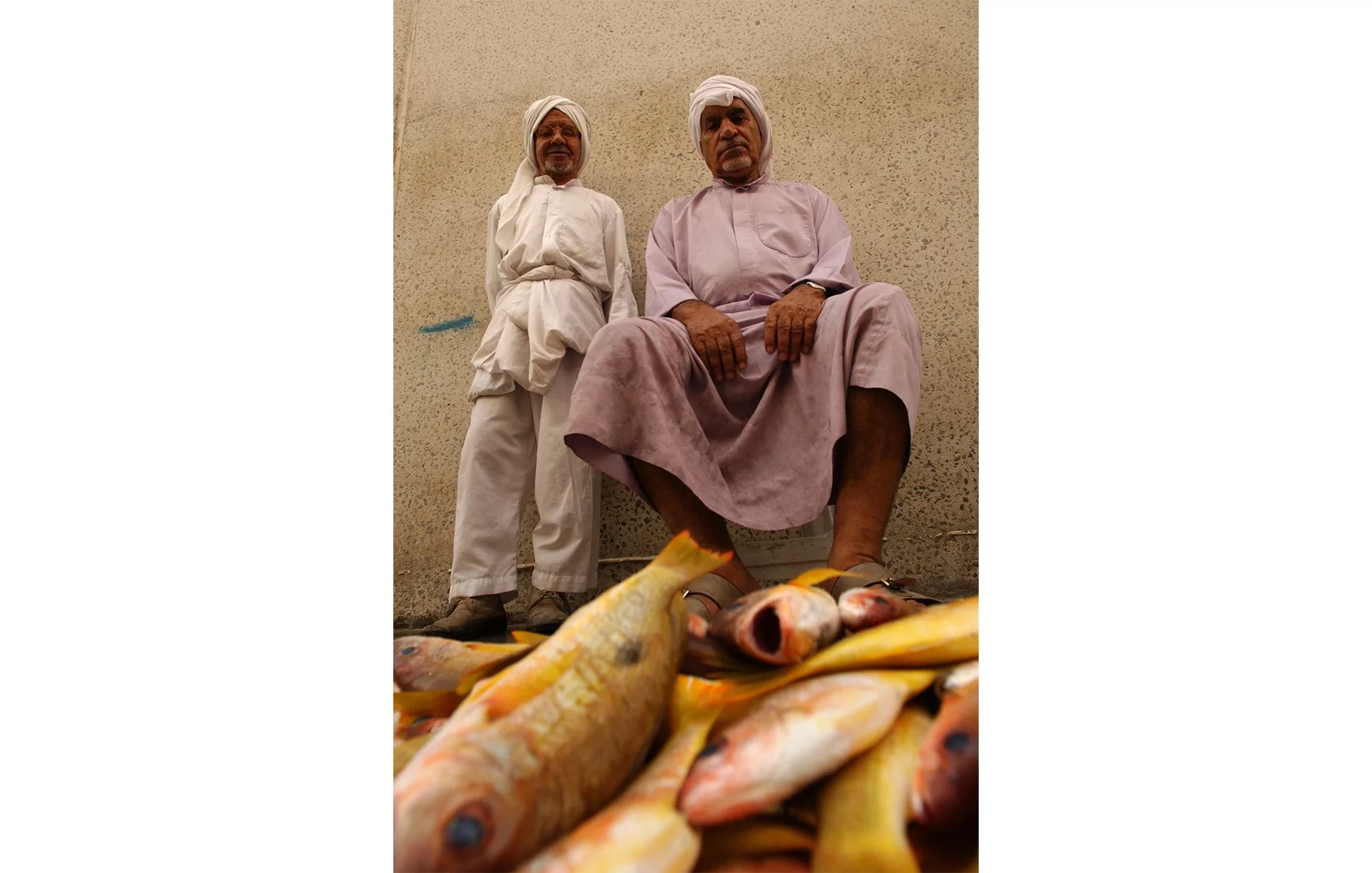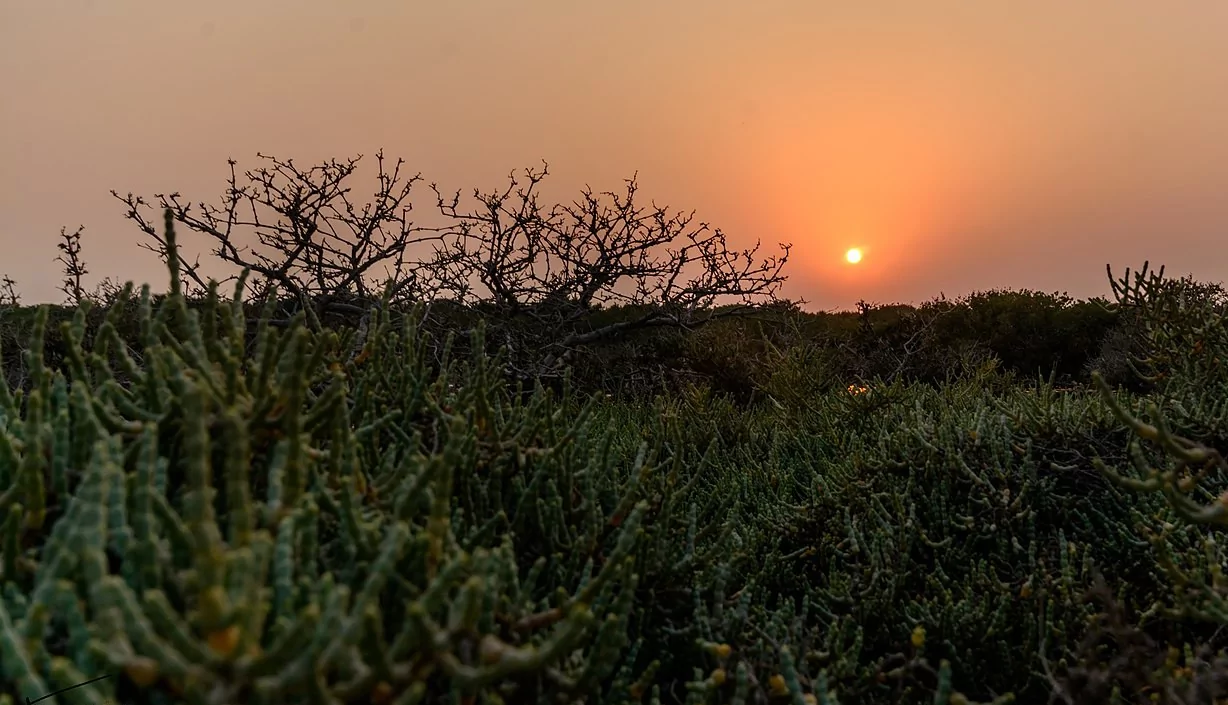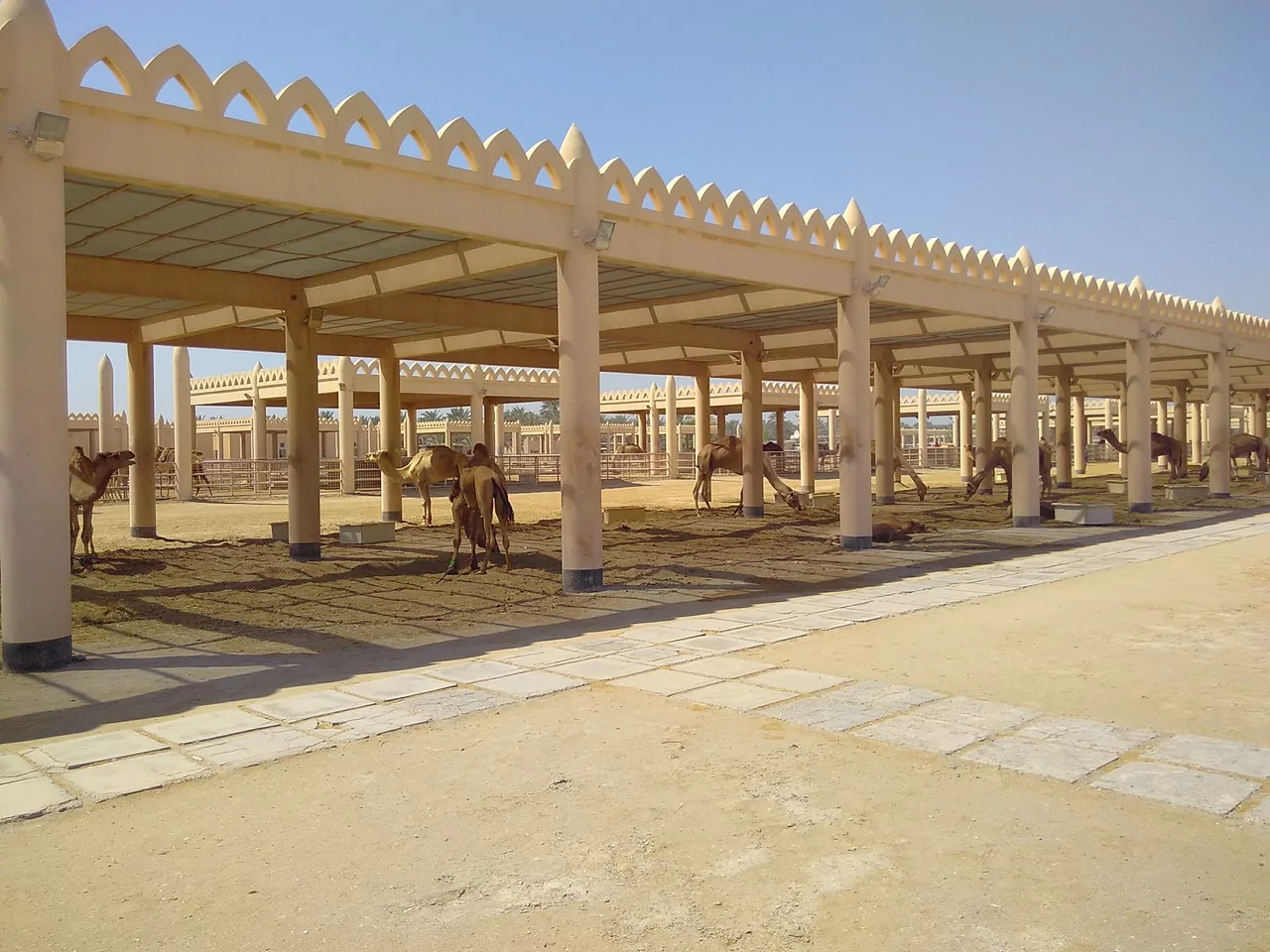
The third-smallest country in Asia, Bahrain is technically an archipelago, as it is made up of thirty islands in total that are all dotted around the mainland that is home to the country’s thriving capital city, Manama. The city is an intriguing place to visit. On the same day, you can wander down the intricate labyrinths of Manama’s Souq, enjoying the hustle and bustle of an ancient bazaar, before dining in the evening at a lavish five-star resort with stunning views across the Gulf. Alongside the tourist magnets are also some charming hideaways that serve as a great balance between the endless grandeur and the local authenticity.
Bahrain’s central fish market explodes into life when the first fishermen return to shore and unload their catch directly into the vast hall. The variety of seafood you can buy here is staggering, from fresh prawns to fierce-looking sharks.
Fish connoisseurs rub shoulders with restaurant owners and market vendors, hoping to get their hands on the finest catch to serve up to their customers. Even if you don’t intend on buying any fish (and let’s face it, most tourists probably don’t have anywhere to prepare it), it’s worth visiting to stand back and watch the frenetic pace at which everyone goes about their business here.
If you plan a trip to Manama’s fish market, the earlier you go, the better. Things start to gather pace as early as 3 am even before the morning prayers ring out across the city. Arriving early ensures you don’t have to suffer the unbearable stench of later in the day when the smell of the seafood has mixed with the heat of the day. The best catch is auctioned off early in the morning too, and it can make for entertaining viewing watching people outbid each other for the finest produce.

Vendors and their daily catch at Manama Fish Market
photography by: Wikimedia Commons
Located to the east of the Bahrain mainland, Tubli Bay is an area of outstanding natural beauty. Known for its wealth of marine and birdlife, the bay area suffered from illegal land reclamation and environmental pollution in the not-so-distant past, and as such, has become a protected area under Bahraini Law, as it was added to the list of Ramsar wetlands of international importance.
Although significantly reduced in size from what they once were, the mangroves at Ras Sana and Ras Tubli are otherworldly and make you quickly forget that you’re in the Middle East.
Visitors to this stunning part of Bahrain can enjoy a boat trip through the mangroves and witness nature at its finest. The fertile waters are a significant breeding ground for shrimp, which in turn attracts vast swathes of migratory bird species that add to the spectacle, culminating in a pink carpet of impressive flamingos that populate the area.

A sunset over the mangrove forest of Tubli Bay
photography by: Nkssrinivas
As the name would suggest, the Prince Khalifa Bin Salman bridge connects Bahrain with the artificial island that also bears the prince’s name. The island lies less than 5km east of Manama and is accessed by the causeway, which is an impressive 404m long with a 120m bowstring arch.
The bridge was completed in 2003 and enabled tourists to visit the popular Hidd waterpark on the small island, which is also one of Bahrain’s major tourist attractions. But the bridge itself attracts visitors from all walks of life and is an interesting place to visit.
If you arrive at the bridge in the early morning or late evening, you can watch the many fishermen vying for their catch in the Gulf below. What’s more, it’s a wonderful place to watch the sunset over Manama’s skyscrapers and is the perfect place to take some selfies with loved ones to capture the beauty of the capital city.

Prince Khalifa Bin Salman Bridge as it seen from a distance
photography by: Chris Price
Perhaps the most stunning beaches in all of Bahrain can be found on the Nurana islands, two artificial outcrops that are a fifteen-minute drive west of Manama. The islands are a popular destination with joggers, cyclists, and even horseback riders, and it’s the ideal place to get out of the hectic scenery of the city.
The turquoise blue waters of the Gulf are used by both fishermen and water-sports enthusiasts, and you can even buy fresh fish pulled directly from the sea. You can also pick an isolated spot and spend the night star gazing, enjoying the peace and tranquillity of nature so close to the thriving metropolis of Manama.
If you visit the Nurana islands, make sure you take your camera or smartphone along with you, as the photo opportunities are not to be missed. Looking back to Manama, you can capture stunning cityscapes, or turning your attention to the Gulf you can snap images of the various boats that are silhouetted against the early evening sky.
For centuries, camels have been integral to life for people living in and around the desert. The Royal Camel Farm provides visitors with an incredible insight into one of the most significant aspects of Bahraini culture, and you can visit the more than 600 camels that call the farm home.
Sheikh Mohammad created the farm in order to preserve camels in Bahrain, as their numbers dwindled as fewer people relied on them for transport across the desert as other means became widely available.
In Bahraini culture, camels are still seen as a symbol of power, wealth, and fertility, and many of the camels at the farm are owned by some of the wealthiest families in all of Bahrain. A visit to the farm is a rare opportunity to closely interact with camels, including caressing, riding, taking selfies even sip a camel milk if you come early enough.

The Royal Camel Farm and its Arabian style roof structure
photography by: Beireke1
Commissioned in 2001, the GPIC bird sanctuary exists to protect all native and migratory bird species in Bahrain. Their work has helped to protect flamingos that returned to the waters in the year the sanctuary was commissioned.
The sanctuary provides a small nesting area and a freshwater pond to ensure that birds can enjoy a natural habitat, and the sanctuary has seen an increase in numbers of Western Reef Herons, Collared Doves, and Hoopoes, as well as many other species.
The sanctuary provides excellent viewing for birders and shows visitors the incredible variety of birdlife that populates the shores of the Bahraini archipelago.